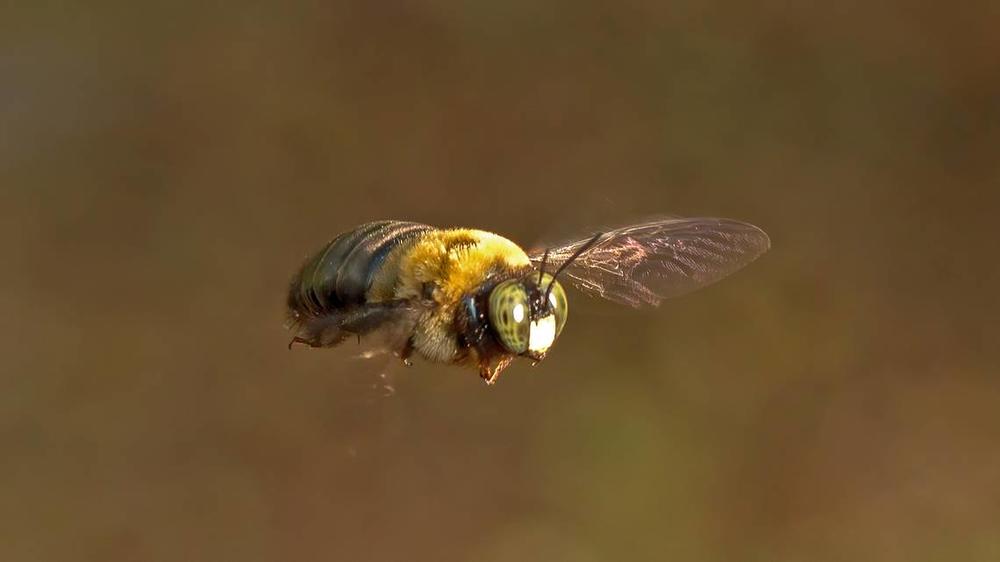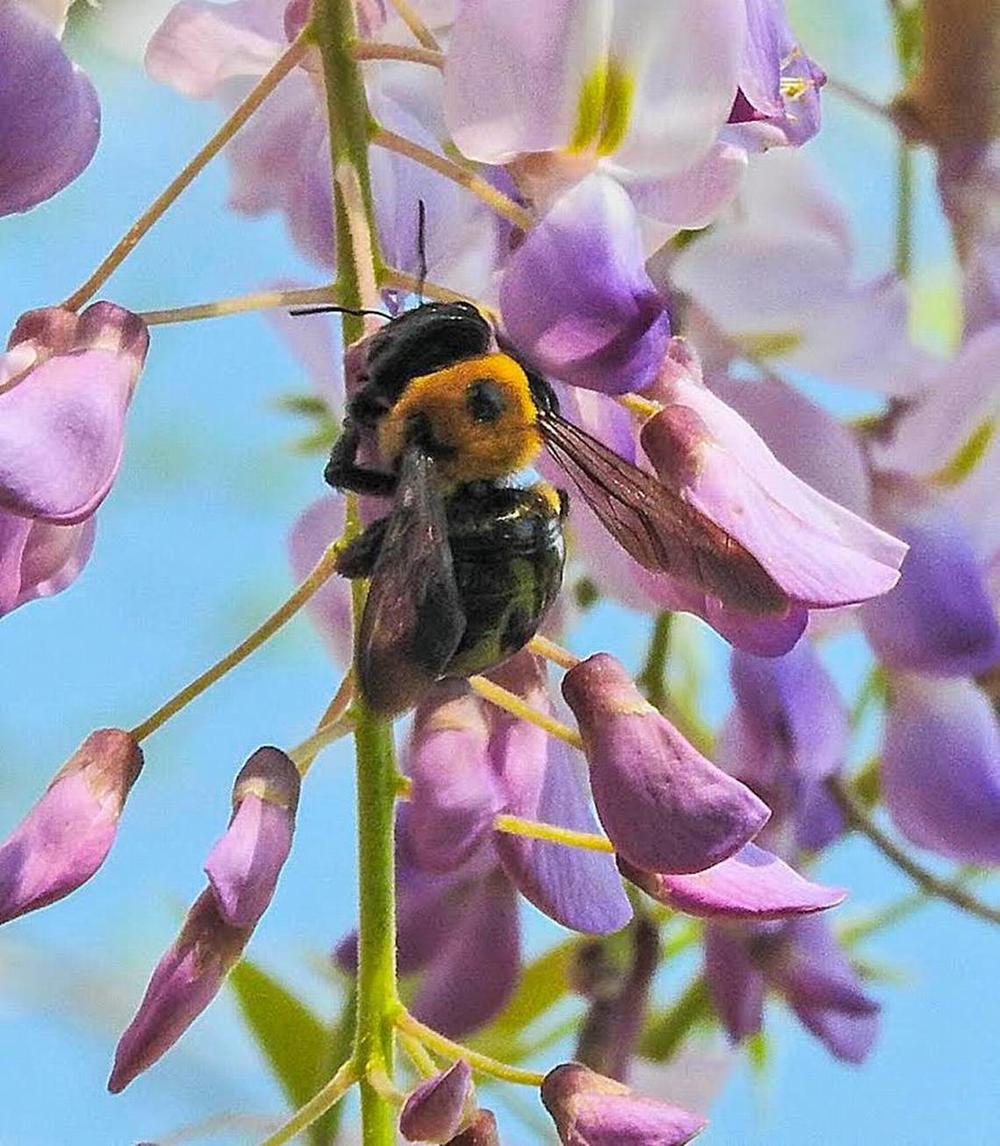
Section Branding
Header Content
Carpenter bees can sting you and drill into wood. Here are tips to keep your home safe
Primary Content

Springtime is here and summer is just around the corner. Although we are welcoming warmer weather and sunshine, there are always some unwelcome guests this time of year.
Some bite, some slither, but these little busy bees buzz — and we aren’t talking about sweet honey bees.
We’re talking about carpenter bees, some of which can sting you.
HOW TO IDENTIFY A CARPENTER BEE
According to Bug House Pest Control, you can use these tips when identifying carpenter bees:

- They’re typically one inch in length, which is slightly larger than other bees you’re used to seeing.
- Yellow markings on their back stand out from their smooth abdomen. This is different from bumblebees, which, as you’ve probably noticed, are furry all over.
- Only female carpenter bees have the ability to sting, but will typically only do so if they feel seriously threatened.
WHY YOU SHOULD BE ALARMED
These little pesky bees can destroy wood structures, so it is best to take carpenter bees seriously.
How do they do it?
Contrary to popular belief, these bees don’t eat the wood, but rather burrow in it and can actually drill into wood. They also stain walls from defecating near their nests, too.
The most common places you’ll find them are in unfinished wooden decks, sidings, outdoor furniture, window sills and log homes.
HOW TO PROTECT YOUR HOME FROM CARPENTER BEES
-
The best and easiest way to protect your home from carpenter bees is to add some type of finish to any wooden structures around your home.
- Seal exterior openings.
- Plug holes. If you notice any holes around the exterior of your home, especially if they’re accompanied by the “sawdust” we discussed above, it’s always a good idea to plug them up with something that will last like plugs, caulk, cork, or putty. The best time to do this is during the fall when the bees aren’t active. If you plug holes while bees are inside, they’ll create new tunnels and continue damaging your home. Just remember, bees will reuse old holes next season, so it’s important to plug these holes up.
- Eliminate the colony by calling pest control. For more information about carpenter bees and how to protect your home, visit Bug House Pest Control’s website.
This story comes to GPB through a reporting partnership with The Telegraph.

